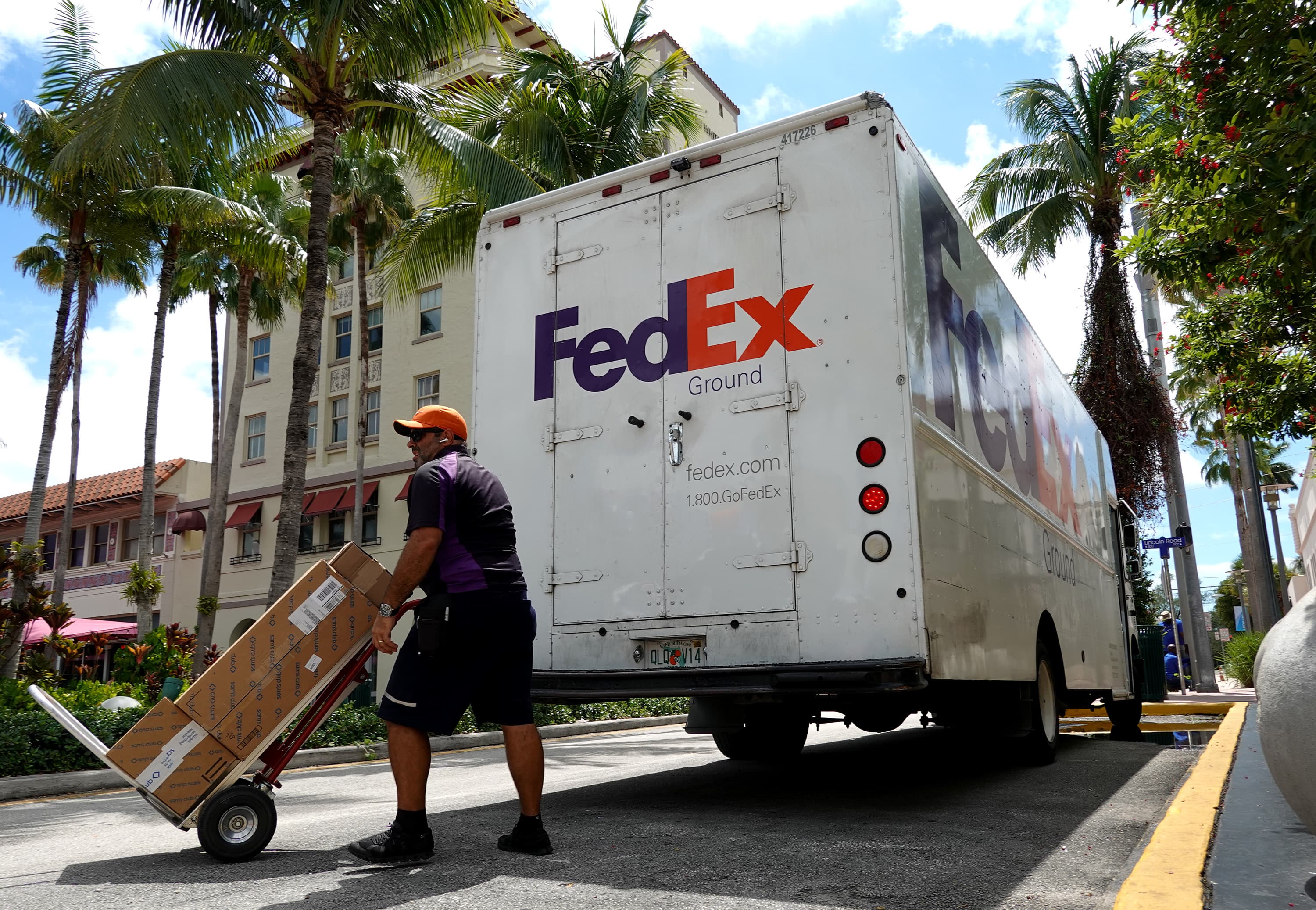FedEx warned of weakening global shipping demand in a preliminary earnings report last week, leaving the market scrambling to determine whether the problems reflect internal company shortcomings or a broader economic diagnosis.
CEO Raj Subramaniam pointed to external factors after the shipping giant missed Wall Street earnings and revenue estimates, telling CNBC’s Jim Cramer on “Mad Money” that the company is a “reflection of everybody else’s business” and that he expects a “worldwide recession.” But some analysts note the relative stability of rivals UPS and DHL, and said FedEx’s own failure to adapt also contributed to its performance.
related investing news
“This is the second year in a row now that FedEx has missed its own guidance for its fiscal first quarter, and I think that does create a bit of frustration amongst investors,” Moody’s analyst Jonathan Kanarek said.
Kanarek was among the analysts who noted the mix of factors − internal and external − that likely played a role in FedEx’s disappointing results.
Confronting reality
Some experts see FedEx’s performance as an overdue confrontation with market realities coming out of the Covid pandemic, which the company previously failed to acknowledge.
At its investor day in June, FedEx set out a bullish 2025 outlook driven by annual revenue growth of between 4% and 6% and earnings per share growth of between 14% and 19%.
“Raj came out with a big show back in June, their first analyst day in two years, and talked about an environment that was pretty upbeat. Yet here we are three months later,” Ken Hoexter, an analyst at Bank of America, told CNBC.
“They weren’t expecting, nor had built in, an economic downturn,” Hoexter said.
Since around the time of its investor day, Subramaniam said last week that FedEx has seen weekly declines in shipping volumes. It’s why the company withdrew its 2023 forecast and announced it would close offices and park planes to slash costs. Its stock fell more than 21%, wiping nearly $11 billion from its market capitalization the day after the report.
Still, FedEx stood by its 2025 expectations, a move that Gordon Haskett Research Advisors called “borderline delusional.” FedEx’s competitors, they say, are taking a more realistic approach to the end of the pandemic-era surge in demand.
While FedEx reported softness in European demand among its ailments last week, UPS gained market share in the region. In its most recent earnings call, UPS boasted its highest quarterly consolidated operating margin in almost 15 years, citing agility amid difficult macroeconomic conditions.
“UPS is two to three years ahead of FedEx in terms of the way they’re looking at post Covid margins,” said Capital Wealth’s Kevin Simpson on “Closing Bell: Overtime.” “It’s almost like FedEx didn’t think the environment would ever go back to normal.”
As part of its cost-cutting efforts, FedEx said it will reduce some ground operations and defer hiring. Meanwhile, UPS will be hiring more than 100,000 seasonal employees for the holiday period.
A bellwether?
Analysts note that FedEx’s ground and express delivery are nevertheless vulnerable to global economic conditions, and that the disappointing performance of the categories could reflect a recessionary environment.
“We really haven’t seen evidence of a broad-based slowdown. But obviously FedEx is a bellwether and we don’t want to dismiss what they’re saying,” said Moody’s Kanarek.
Bank of America’s Hoexter sees the performance of the express category, which came in $500 million below FedEx’s own expectations, as the first indicator of a broader downturn. He said small declines in volume significantly impact margins because air delivery costs so much to maintain.
Ground service, which came in $300 million short of the company’s forecasts, is the next to feel a slowdown: “When the consumer stops buying, the stores start seeing shelves filled, you stop replenishing those inventories,” Hoexter said.
Hoexter’s biweekly truck shipper survey has reported 11 straight periods in “recession range” according to a Bank of America Global Research report. That comes as FedEx reports lower-than-expected business with top clients Target and Walmart, which have both grappled with excess inventory in recent months.
FedEx reported strong freight margins, but Hoexter noted that the category is “more manufacturing-weighted, which hasn’t felt as big of a brunt.” If demand continues to slow and manufacturers require less production, Hoexter said FedEx could start to see freight volumes soften, too.
Holiday fizzle
Regardless of the factors driving FedEx’s troubles, the upcoming holiday season likely won’t bring any relief. In a statement, FedEx said the cost-cutting actions it announced last week aren’t expected to impact service. “We are confident in our ability to deliver this holiday season,” the company said.
But retailers are expecting muted holiday sales. And fearing the delays of last year, many had items shipped early. The Port of Los Angeles said that 70% of holiday goods had already hit the shores by the end of August.
Inventory gluts that have plagued retailers in recent months may also persist, leading to lighter shipping volumes and further dampening FedEx’s business. A KPMG survey found 56% of retail executives expect to be left with excess merchandise after the holidays.
FedEx does have some cushioning if troubles persist, S&P’s Geoff Wilson notes. The company is sitting on a lot of cash – nearly $7 billion as of May 31 − as opposed to the roughly $3 billion to $4 billion it typically had before the pandemic. He also noted the company reaffirmed its share repurchase plan of about $1.5 billion
“This is the best signal management can give about long-term strength at FedEx,” Wilson said.



